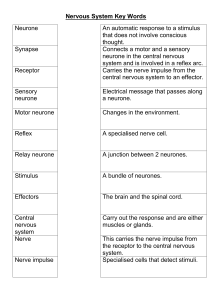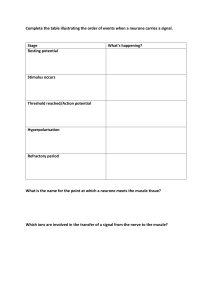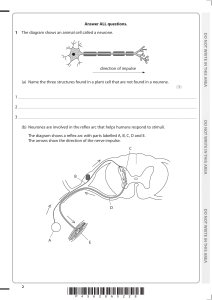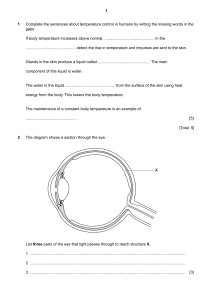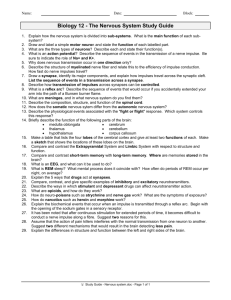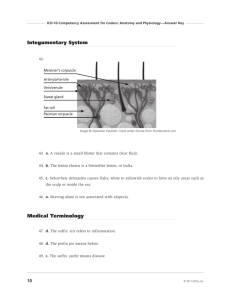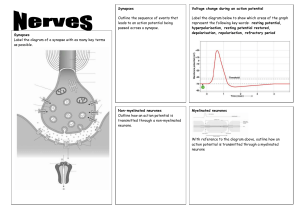You need to know:
advertisement
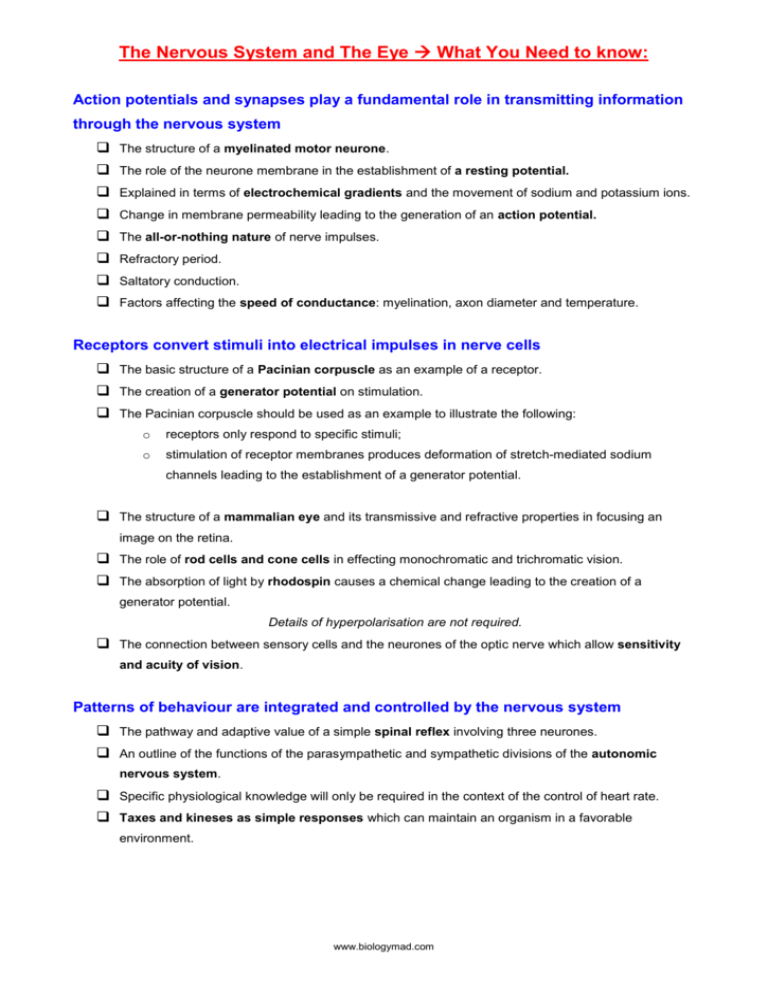
The Nervous System and The Eye What You Need to know: Action potentials and synapses play a fundamental role in transmitting information through the nervous system The structure of a myelinated motor neurone. The role of the neurone membrane in the establishment of a resting potential. Explained in terms of electrochemical gradients and the movement of sodium and potassium ions. Change in membrane permeability leading to the generation of an action potential. The all-or-nothing nature of nerve impulses. Refractory period. Saltatory conduction. Factors affecting the speed of conductance: myelination, axon diameter and temperature. Receptors convert stimuli into electrical impulses in nerve cells The basic structure of a Pacinian corpuscle as an example of a receptor. The creation of a generator potential on stimulation. The Pacinian corpuscle should be used as an example to illustrate the following: o receptors only respond to specific stimuli; o stimulation of receptor membranes produces deformation of stretch-mediated sodium channels leading to the establishment of a generator potential. The structure of a mammalian eye and its transmissive and refractive properties in focusing an image on the retina. The role of rod cells and cone cells in effecting monochromatic and trichromatic vision. The absorption of light by rhodospin causes a chemical change leading to the creation of a generator potential. Details of hyperpolarisation are not required. The connection between sensory cells and the neurones of the optic nerve which allow sensitivity and acuity of vision. Patterns of behaviour are integrated and controlled by the nervous system The pathway and adaptive value of a simple spinal reflex involving three neurones. An outline of the functions of the parasympathetic and sympathetic divisions of the autonomic nervous system. Specific physiological knowledge will only be required in the context of the control of heart rate. Taxes and kineses as simple responses which can maintain an organism in a favorable environment. www.biologymad.com
